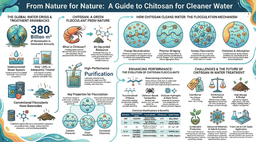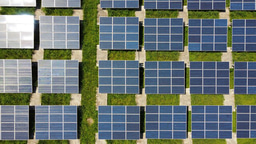Renewable water desalination without batteries
Published in Earth & Environment, Electrical & Electronic Engineering, and Civil Engineering

Our work is rooted in creating desalination systems for communities in low- and middle-income countries (LMICs). Many of these communities rely on groundwater, and unfortunately this water is becoming more and more saline with climate change and aridification.
Our lab (the Global Engineering & Research Center) started looking into innovations in desalination around a decade ago, with motivation stemming from the need for brackish groundwater desalination in India. We made several steps in reducing the cost via optimization and control schemes using electrodialysis. Electrodialysis (ED) stood out to us because it was energy and water efficient in brackish conditions (but also has wide applications in brine concentration, and variants such as bipolar ED are being used even for carbon sequestration). This lends itself well to operating in these constrained and remote settings. ED could also operate quite flexibly, which makes it well suited for operating with variable power renewable energy sources.
So, what's the problem?
Both remote communities and large-scale desalination plants could benefit from using renewable energy sources. At the community-scale, renewables could provide an independent power source in areas where grid access may not exist. At the large-scale, integrating renewables could help decarbonize a traditionally energy and carbon intensive industry. However, the issue is that renewable desalination traditionally requires significant amounts of energy storage, usually in the form of large battery banks.
These batteries increase the initial capital cost of the system or plants, they increase operational costs if they need to be replaced, they can increase the system operational complexity, and they are difficult to rapidly ship via air (for instance, in the case of a humanitarian deployment).
What did we do in this paper?
In this paper, we came up with a novel way to control an electrodialysis system with variable power inputs, without the need for significant energy storage, like batteries.
There are a lot of nonlinear relationships and constraints in the control of an ED system, and we need to tweak these levers just right to get the most water for different power inputs, which rapidly change throughout the day (without something like a battery buffering these changes). It was tricky to figure out how to manage all of these relationships in an optimal way and in a computationally efficient way.
We came up with a simple cascaded feedback control loop that both provided optimal desalination rates, while also tracking variable power rapidly enough to minimize the need for energy storage. We tested and validated this for ~6 months in New Mexico on a community-scale field pilot system using real groundwater and real solar irradiance. We found we were able to capture and optimally use over 94% of the available solar energy (on average) throughout the study, without the need for significant energy storage.
Currently, we are working on building an even larger scale system to test some new architecture and control ideas.
_______________________________________________
A short story from the field...
Cracking open the trailer door and peeking out, I checked to see if the storm had subsided. Who knew it could rain so much in the desert? Water had begun overflowing the tanks and spilling onto the testing pad. Impatiently, I yelled to the other staff engineers, “I’m going to try and disconnect the hoses!”
With a surge of adrenaline, I burst through the trailer doors and ran to the tanks. The rain didn’t bother me much – I was already soaked in sweat. I fumbled with the connections and heard thunder overhead. I managed to pull the first hose release lever. Then, moments later, I pulled the second lever and water rushed out! Exhausted, I used the last of my energy to run and seek shelter underneath the solar rover. But I didn’t see quite how low the solar panels were. BOOM.
I found myself on the ground with a headache. Wondering how I got there. Wondering how I ended up doing my research in the middle of the Chihuahuan Desert. And as I looked up, I saw quite a curious sight – a rainbow in the foreground of mountains. One thing I have come to realize through these experiences, is that despite the uncertainties, the chaos, the literal blood sweat and tears – there is beauty in the struggle.
You see, as a large part of the research behind this paper, I traveled to New Mexico. There is a national lab (the Brackish Groundwater National Desalination Research Lab) out there that specializes in brackish groundwater treatment – or treating salt water that comes from wells deep underground. At MIT, I work in the Global Engineering and Research Lab (GEAR lab). As part of our work, we build systems that desalinate and treat this water with the aim of making it cheaper and more accessible to highly-constrained communities: from coastal villages in Uganda to farmers in Jordan. After the hours spent on chalkboards coming up with the theory, and the ceaseless hours designing and constructing the system, someone has to get the thing across the country. Someone has to set it up. Someone has to test it and prove that it actually works. In this case, that someone included me and several staff engineers.
Just a few days earlier, I was behind the wheel of a truck, towing over 10,000 pounds of equipment, towards the research laboratory. We’d made some great progress and covered some serious distance in a single-day drive starting from Minnesota. We had already driven from Boston to Buffalo, Buffalo to Chicago, Chicago to Minneapolis, and now we were making a push towards Albuquerque. After deciding we deserved some dinner, I pulled off the freeway into an Applebee’s – one of the few places open at 9pm. As I got out, I noticed something didn’t look quite right. One of the wheels was missing from the trailer. An entire wheel. No joke.

At this point, we were in the middle of Kansas. Every shop and garage were closed at this hour of night. On top of that, we had to pick up another researcher from Santa Fe in the morning. And Santa Fe was approximately 600 miles away. We had to fix the trailer ourselves to have any chance of getting to New Mexico and getting the system setup within our tight timeline.

I found myself calling around to every store – anything remotely close to automotive – listed as open online. We found two places open and guessed the parts that we would need to repair the missing wheel. Before I knew it, I was hammering the back of a trailer rotor, attempting to replace the wheel, in the warm glow of an Applebee’s parking lot. Workers would go out for breaks, taking a smoke or eating dinner and would stand outside and watch us. Hours later, we got the spare tire on and limped another 30 miles to one of the few hotels with vacancies.
Before we left, the workers were kind enough to give us free lemonades. Best lemonade I’ve ever had. Again, it’s the little wins.

The very next morning, we were in front of a closed Hobby Lobby store after another trip to AutoZone for the right sized studs (bolts that attach the wheel to the rotor via lug nuts), ripping the wheels off once again to make the fix. Eventually, we were on the road! I can’t tell you how good it felt to be driving 70 mph on the highway with the windows down.
I also can’t fully explain how many more unexpected challenges happened that trip. Or the other five trips I’ve taken to the desert. It’s always something. I’ve had pipes burst in my face and pumps run backwards. I’ve painted a trailer floor at 1am and gone on endless consecutive Home Depot runs after forgetting yet another required component.
However, in the same desert, I’ve seen the top of beautiful mountains, sled down white sand dunes, and paused for cinematic sunsets. I’ve eaten surprisingly amazing pizza and met incredibly talented researchers.
Research is hard. But, my best advice to my fellow researchers is to try your best to persevere. And to try to see some beauty in the struggle. And of course, enjoy the little things. They’ll get you through the daily grind.
That rainy afternoon, I got up from the ground and went back to the trailer. The show must go on. Later in the day, the rain subsided, and lo and behold, the system was finally working! After years of effort, it was running fully autonomously, creating drinking water.
Now, as I write this little story to you, I find myself on a plane back to the same desert. Ready for more research adventures and of course, more trouble.
Follow the Topic
-
Nature Water

This journal publishes research on the evolving relationship between society and water resources on a monthly basis. It covers the natural sciences, engineering, and social sciences, with a particular interest in regards to interdisciplinary research.
Related Collections
With Collections, you can get published faster and increase your visibility.
Water pollution and advanced treatment processes
Publishing Model: Hybrid
Deadline: Feb 28, 2026
Remote sensing and forests
Publishing Model: Hybrid
Deadline: Jan 31, 2026



Please sign in or register for FREE
If you are a registered user on Research Communities by Springer Nature, please sign in